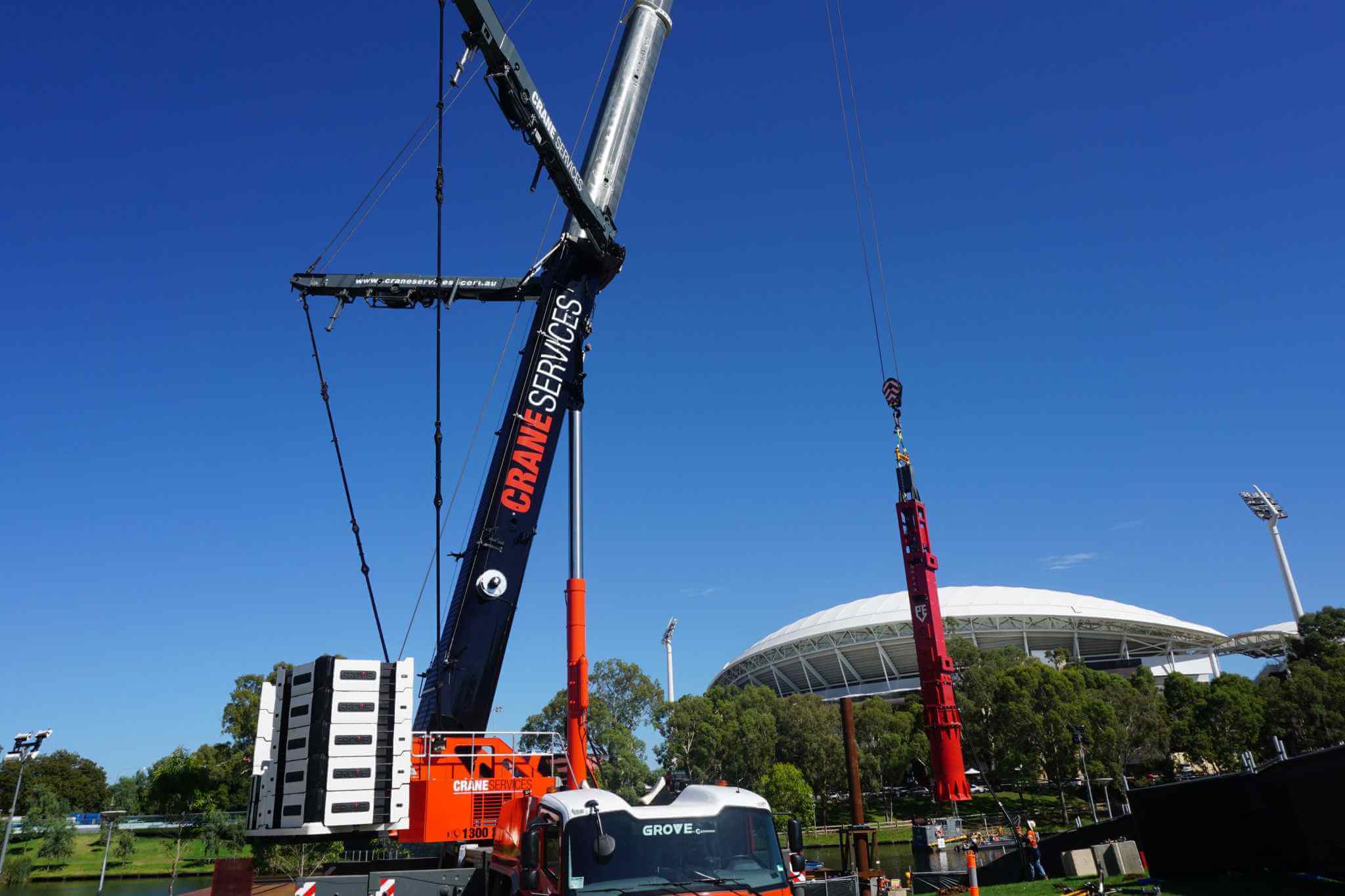When embarking on a construction project, one of the crucial decisions you’ll face is selecting the appropriate crane for your lifting needs, as the right choice can have a major impact on your project. Crane Services understands the importance of this decision, so in this blog, we explore the factors which you need to consider when choosing between two popular crane types: mobile cranes and tower cranes.
1.Understanding the Basics

Mobile Crane:
Mobile cranes are a great option for most sites and offer some financial and logistical benefits. They should be your starting point when making a choice as they are more versatile and can be mobilised to and from site, ready to lift, without significant erection and dismantling costs. They come in various forms, including rough-terrain cranes, all-terrain cranes and crawler cranes, meaning the crane can be tailored to the specific site conditions. These cranes generally have a larger footprint than tower cranes but can still provide comparable reach and lifting capacity, when in optimal lifting position.
Tower Crane:
On the other hand, tower cranes are stationary and typically used for tall buildings. They offer great height and lifting capacity, but can struggle to lift loads at a distance, making them unsuitable for a site with a large footprint. Tower Cranes are most beneficial on projects where the building exceeds 11 floors or where a mobile crane cannot fit due to site constraints.
2. Mobility and Flexibility
Mobile Crane:
As the name suggests, mobile cranes excel in mobility. This means that they can easily move around the perimeter of a building to the most advantageous lifting position or can be easily swapped out for a larger crane when required. Given that, a smaller, more economical crane, can be used for the bulk of work and a larger, more expensive crane, can be brought in to manage only the heaviest lifts. There is even the option of removing the crane altogether, for periods of time when no lifts are required. This versatility results in significant savings for the project when compared to a tower crane.
Mobile cranes are also a great option to ensure down time is kept to a minimum. Unlike tower cranes, if a mobile crane breaks down, it can simply be swapped out, with minimal impact to the projects timeline.
Tower Crane:
Tower cranes, while powerful and stable, lack the mobility and flexibility of their counterparts. They excel on vertical construction projects, where the lifting requirements are concentrated on a small footprint, at height. Tower cranes must be constructed in position, therefor there is no option to relocate the crane and should a breakdown occur, lifting will not be an option until the crane is repaired. In many cases, tower cranes are supported by mobile cranes, for lifts which exceed their limitations at the outer perimeter of job sites.
3. Lifting Capacity
Mobile Crane:
Mobile cranes are available in a range of lifting capacities comparable to tower cranes, with the added benefit of their mobility and flexibility. However, mobile cranes do need access to the site, so may not be suitable for projects being constructed on a very tight site.
Tower Crane:
Tower cranes have great lifting capacities in close and are particularly suited for lifting to great heights. If your project involves the construction of tall structures, a tower crane might be the more suitable choice.
4. Project Duration and Cost Considerations
Mobile Crane:
Undoubtedly, Mobile cranes are the most cost-effective option for your lifting needs. They are cheaper to mobilise, erect, operate, dismantle and demobilise. They can be swapped out as required and are able to be operated by a smaller crew. Contrary to popular belief, mobile cranes can service projects up to 11 floors; far taller than most people realise. Their versatility and lower setup and operating costs make them a pragmatic choice for a broad range of projects.
Tower Crane:
As previously mentioned, tower cranes are ideally suited to a particular type of project but those benefits do come at a cost. They are expensive to erect and dismantle. They require an additional rigger, at all times, while in operation. A breakdown can be devastating to a sites program, as there is no choice but to wait for the repair before work can proceed.
Despite these costs, there are projects for which tower cranes are ideal, as there is no other crane which can compete with a tower crane on a tight site, where construction exceeds 11 stories.
Speak to the Experts

The choice between a mobile crane vs. tower crane depends on the specific needs of your project. Crane Services can guide you through this decision-making process, offering expert advice tailored for your unique project. With one of the largest fleets of mobile cranes in South Australia, Crane Services can help you achieve your lifting requirements.
Want to know more? Contact Crane Services today, call us on 0457 519 875 or email your enquiry.
